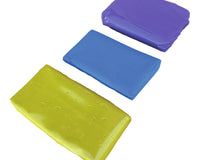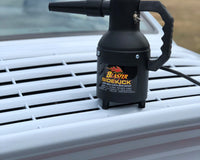Car paint decontamination is one of the most important stages in professional car detailing, yet it is often overlooked by car owners who believe a simple wash is enough to maintain their vehicle’s exterior. Unlike regular washing, which removes visible dirt and dust, paint decontamination focuses on eliminating embedded contaminants that cannot be removed with standard cleaning methods. These contaminants, if left untreated, gradually degrade the paintwork, reduce gloss, and make polishing or waxing less effective. The process is vital for ensuring that protective coatings, waxes, and sealants bond properly, enhancing both appearance and durability. For anyone serious about preserving their car’s finish, paint decontamination is a must.
The term “paint decontamination” refers to a series of methods designed to strip away bonded contaminants like tar, industrial fallout, brake dust, sap, mineral deposits, and road grime that embed themselves into the clear coat. These impurities are often invisible at first but can be felt as a rough texture when running fingers gently across the surface of freshly washed paint. Left untreated, they cause staining, oxidation, and corrosion that eventually weaken the protective layers. Regular decontamination ensures your car maintains a smooth surface, deep shine, and enhanced longevity.
Many vehicle owners underestimate how quickly these contaminants accumulate. Even new cars straight from the dealership may already carry embedded fallout from transport, storage, or road exposure. Therefore, decontamination should not be seen as optional or only for older vehicles; it is an essential maintenance routine for preserving car paint. Understanding the correct methods and frequency ensures that your vehicle looks showroom fresh for years to come.
Why Paint Decontamination Is Necessary
One of the main reasons paint decontamination is necessary is the constant exposure of vehicles to environmental contaminants. Road tar, tree sap, bird droppings, industrial fallout, and hard water spots do not simply sit on the surface; they bond chemically and mechanically with the clear coat. Over time, these contaminants create micro-abrasions and etching that no amount of shampooing can fix. Decontamination addresses these deeper issues by breaking down and removing the bonded particles.
Another critical reason is to prepare the paint surface for protection. Wax, sealant, or ceramic coating applications require a clean, contaminant-free surface to bond effectively. If contaminants remain, they create a barrier that prevents proper adhesion, reducing durability and effectiveness. This means products applied after inadequate preparation will fail faster, wasting both time and money. Decontamination ensures that your detailing efforts are worthwhile by giving protective layers the best chance of performing to their full potential.
Finally, decontamination is necessary for maintaining the aesthetics of the paintwork. A contaminated surface loses its ability to reflect light properly, leading to dullness, roughness, and an overall aged appearance. By removing these bonded impurities, the car’s colour depth and gloss are restored, creating that mirror-like finish that every car enthusiast desires. For anyone preparing a vehicle for sale, presentation is crucial, and paint decontamination plays a significant role in maximising resale value.
Stages of Car Paint Decontamination
Paint decontamination is not a single-step process; it involves multiple stages, each targeting different types of contaminants. These stages include chemical decontamination, mechanical decontamination, and paint cleansing. Together, they work to create a perfectly smooth and contaminant-free surface.
The first stage is chemical decontamination, which uses specialised products to dissolve contaminants such as iron particles, tar, or mineral deposits. Iron fallout removers dissolve brake dust and rail dust chemically, turning them into a water-soluble form that can be rinsed away. Tar removers and mineral deposit removers serve similar purposes for other types of contamination. These chemicals target impurities that are invisible but highly damaging to the paint.
The second stage is mechanical decontamination, most commonly performed with a clay bar or synthetic clay mitt. This step physically pulls out bonded particles from the clear coat. The clay glides across lubricated paint, shearing off embedded contaminants that chemicals cannot fully remove. While slightly more labour-intensive, this stage is crucial for achieving the silky-smooth finish required before polishing or sealing.
The third stage involves paint cleansing, which includes pre-wax cleaners or polishing compounds that refine the paint surface. This step eliminates any leftover residues, faint etching, or minor oxidation, preparing the paint for the application of protection products. Each stage plays a complementary role, ensuring the paint surface is as clean and flawless as possible.

Chemical Decontamination Explained
Chemical decontamination is highly effective because it addresses the contaminants that bond at a molecular level with the paint. Iron fallout removers, often called “bleeding wheel cleaners” due to their colour-changing reaction, target ferrous particles originating from brake pads, rail dust, and industrial pollution. These particles embed into the paint and oxidise, causing rust spots if not removed. Applying fallout remover to paintwork allows the product to break down these particles without aggressive scrubbing.
Tar removers are another crucial chemical tool. Road tar, asphalt, and glue residues stick stubbornly to lower panels, bumpers, and wheel arches. Regular washing barely affects them because they are petroleum-based. Solvent-based tar removers dissolve these substances safely, allowing them to be wiped or rinsed away without damaging paint. This step is especially important for vehicles frequently driven on highways or near construction areas where tar pickup is common.
Water spot removers target mineral deposits caused by hard water drying on paint or glass. These mineral spots etch into the surface over time, leaving dull patches and marks. Acidic cleaners or pH-balanced water spot removers dissolve these deposits, restoring clarity. By tackling different types of contaminants with the right chemicals, this stage ensures the paint is free from hidden impurities before moving to mechanical decontamination.
Mechanical Decontamination with Clay
Mechanical decontamination provides the tactile smoothness that distinguishes a properly detailed vehicle from one that has only been washed. The clay bar or synthetic clay mitt is used to glide across lubricated paint, capturing and removing embedded debris. This method physically extracts contaminants stuck in the pores of the clear coat that chemicals cannot fully dissolve.
Clay bars come in different grades, ranging from fine to heavy-duty. Fine-grade clay is ideal for lightly contaminated vehicles, while medium or heavy-grade clays are used for neglected or heavily exposed cars. However, heavy clays may leave minor marring that requires follow-up polishing. For beginners, fine or medium-grade clay paired with plenty of lubricant provides a balance of effectiveness and safety.
Using clay correctly is essential to avoid unnecessary damage. The surface must always be lubricated with a dedicated clay lubricant or diluted quick detailer spray to prevent friction. The clay should be folded and kneaded frequently to expose a clean surface as contaminants accumulate. After claying, the difference is noticeable: the paint feels smooth to the touch, looks glossier, and is fully ready for further detailing steps.
When and How Often to Decontaminate
The frequency of paint decontamination depends on driving habits, environment, and storage conditions. For cars that are daily driven in urban or industrial areas, decontamination every three to four months is recommended. Vehicles stored indoors or driven less frequently may only require decontamination twice a year. The key indicator is the feel of the paint surface; if it feels rough after washing, it is time to decontaminate.
Seasonal changes also affect the need for decontamination. For example, after winter, road salt and grime create a build-up that needs to be addressed. Similarly, summer often exposes vehicles to tar, tree sap, and increased fallout. Regular decontamination in these periods ensures that the car’s paint remains protected from environmental damage.
Overdoing decontamination, particularly with clay bars, can cause micro-marring if performed too aggressively or too often. Therefore, it is important to balance frequency with necessity. Chemical decontamination can be done more often without issue, while mechanical claying should be limited to when it is truly required. This ensures paint health is preserved in the long run.
Preparing Paint for Protection
The final goal of decontamination is to prepare the surface for the application of protection layers such as wax, sealant, or ceramic coating. Once contaminants are removed, the paint is bare and clean, allowing protective products to bond directly to the clear coat. This maximises durability and ensures the best gloss possible.
Polishing is often recommended after decontamination, especially if minor marring or scratches are visible. Polishing refines the paint, enhances depth of colour, and ensures the surface is flawless before sealing it. Skipping this step may reduce the effectiveness of the final protective layer, especially if heavy claying was necessary.
Once polished, the paint is ready for wax or ceramic coatings. Applying protection immediately after decontamination locks in the clean surface and prevents rapid recontamination. A properly decontaminated and protected car resists dirt better, looks shinier for longer, and is easier to maintain.
Conclusion: The Importance of Regular Paint Decontamination
Car paint decontamination is a vital process for maintaining the long-term health and beauty of a vehicle. It addresses issues that regular washing cannot, targeting contaminants that embed themselves into the clear coat and cause lasting damage. By combining chemical and mechanical methods, decontamination ensures a smooth, clean, and glossy finish.
Incorporating decontamination into your detailing routine enhances not only the car’s aesthetics but also the effectiveness of protective layers. A contaminant-free surface reflects light better, looks more vibrant, and offers superior resistance to environmental stress. Whether preparing for polishing, waxing, or ceramic coating, decontamination is the foundation of all professional detailing.
By performing paint decontamination at the right frequency and using the correct methods, car owners safeguard their investment, enjoy a showroom finish, and extend the lifespan of their paintwork. For anyone serious about car care, decontamination is not optional – it is an essential step in achieving and maintaining a truly professional finish.




